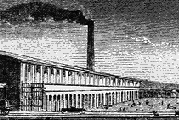|
________________________________________________________
"In the case of the individual, pure time preference is irrational, it means that he is not viewing all moments as equally parts of one life. In the case of society, pure time preference is unjust: it means...that the living take advantage of their position in time to favor their own interests."
________________________________________________________ Contents (1) Intertemporal Social Welfare Functions
The practical implications are self-evident: if time preference does lead people to "save too little", perhaps the government should step in and "force" them to save. As Pigou concluded, "there is wide agreement that the State should protect the interests of the future in some degree against the effects of our irrational discounting and of our preferences for ourselves over our descendants." (Pigou, 1920: p.29). Public pension systems such as the American "Social Security" program were designed precisely with this goal in mind. But Ramsey's (1928) "proof" that a society composed of people with positive time preference saved too little depended heavily on how he determined the "optimal" level of savings. Ramsey determined this with perfectly Benthamite instincts: he looked for the optimal allocation of consumption across generations which maximized intertemporal "social welfare", defined as the sum of individual utilities across generations. This has led to much debate and what follows is a rather lengthy, but by no means deep, digression on "intertemporal" social welfare functions, with particular attention paid to the concept of "time preference".
|
All rights reserved, Gonšalo L. Fonseca

